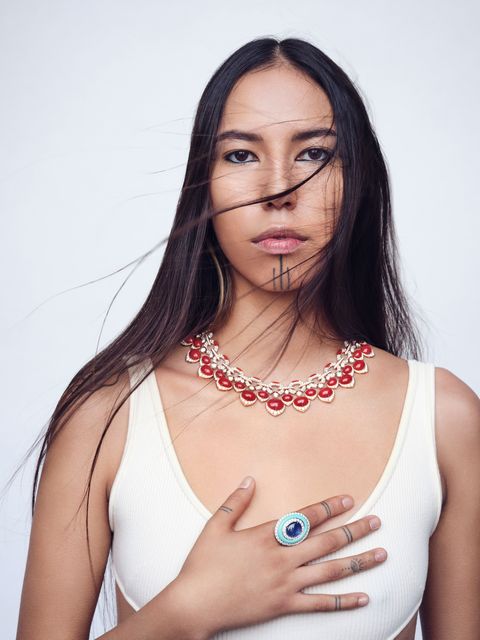
What people might notice first about Quannah Chasinghorse is the Indigenous
history she wears on her face. I do, too, because her screen—she’s joined from Paris, where she’s walking at Fashion Week—cuts off the top of her head. I see her narrow chin, her face tattoo, and her beaded earrings by Athabaskan artist Melanie Titus. Chasinghorse is dressed in a white mesh top, burgundy bralette, and black pants. She looks like a model in streetwear, but she also looks like so many rez girls I know and love: tough and sweet. When she adjusts the screen, she smiles, and her whole face is bright and genuine.
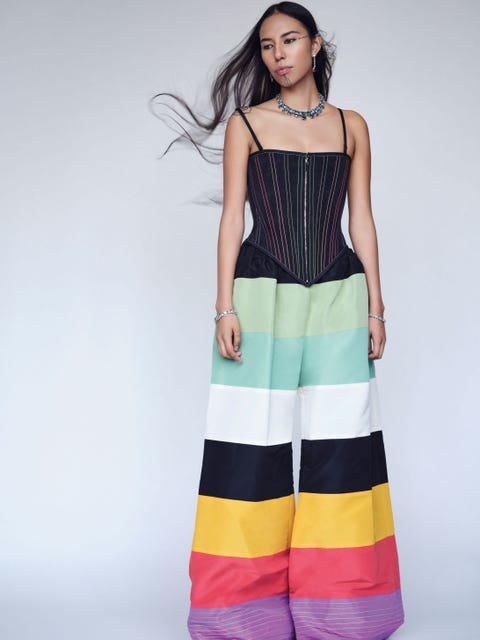

Chasinghorse was 14 when she received her first Yidįįłtoo, a traditional face tattoo done by her people. Her mother did it for her. The tattoo was a rite of passage she could have received at a younger age, but she decided to wait until she was old enough to defend it, “because I knew that if people knew I got [it] younger, they wouldn’t have accepted me. Like, ‘A 12-year-old with a tattoo on her face?’” She smirks at the ignorance she’s encountered.
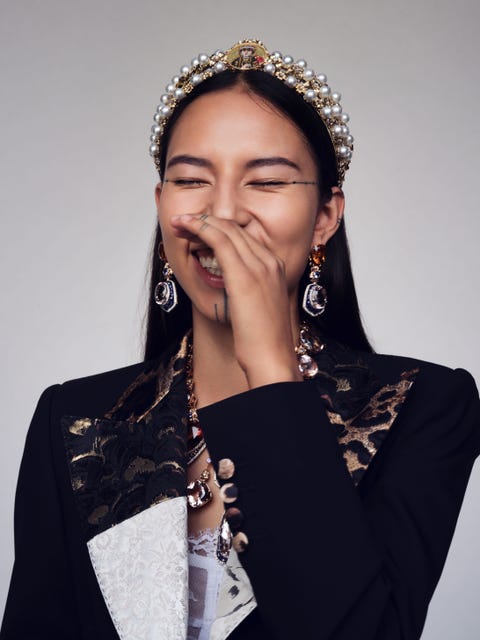
Some people don’t like the limelight, but it seems that Chasinghorse has been preparing for this her whole life. The 19-year-old model is a warrior for her culture and the land her people have inhabited for thousands of years. She’s Hän Gwich’in and Sicangu Oglala Lakota. Raised by strong matriarchs, she’s a fourth-generation land protector for the Arctic National Wildlife Refuge in her home state of Alaska. Her mother, Jody Potts-Joseph, has worked for cultural reclamation since before Chasinghorse was born, and frequently took her dog mushing when she was a child. At this past Fashion Month, Chasinghorse appeared on the runways of Chloé, Savage x Fenty, Gabriela Hearst, and Prabal Gurung, and became the first Indigenous woman to walk for Chanel, tweeting that the experience “[made] me feel comfortable, seen, and beautiful!” For many Native Americans, and Indigenous people across the globe, this much light falling on a fierce advocate for our issues makes us feel seen, too.
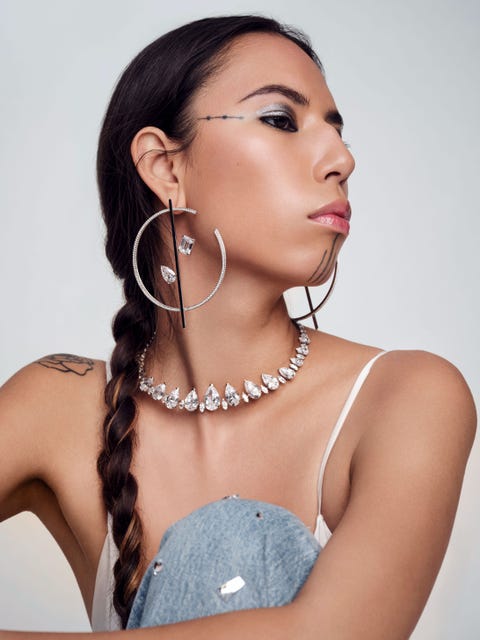
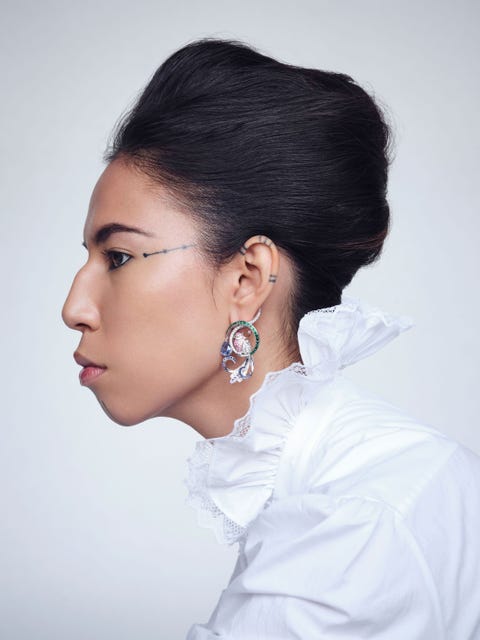
As for her distinctive tattoo, Chasinghorse is the first girl in her tribe to reclaim the tradition as young as she did, and it was the first tattoo her mother had ever done (she has tattooed many Indigenous people since, including land protector and Reservation Dogs star Dallas Goldtooth). Traditionally, a tattoo would be given to a Hän Gwich’in girl between the ages of 12 and 14 to mark her passage into womanhood. Missionaries banned the practice in the 19th and 20th centuries, along with many traditions and languages. The vertical lines down Chasinghorse’s chin represent a reclamation of a culture once shamed, and they make her look like a warrior when she walks the runway or defends the Arctic National Wildlife Refuge on Capitol Hill or drops a “Sacred Lands Not for Sale” banner in Times Square with a raised fist. At every possible opportunity, she finds a way to advocate for the land and her people. “I grew my platform through my advocacy work, through being a land and water protector and showing up,” she says. “That’s what got me attention and started my career. Being able to live my dream and continue that important work is all I could ever ask for.”
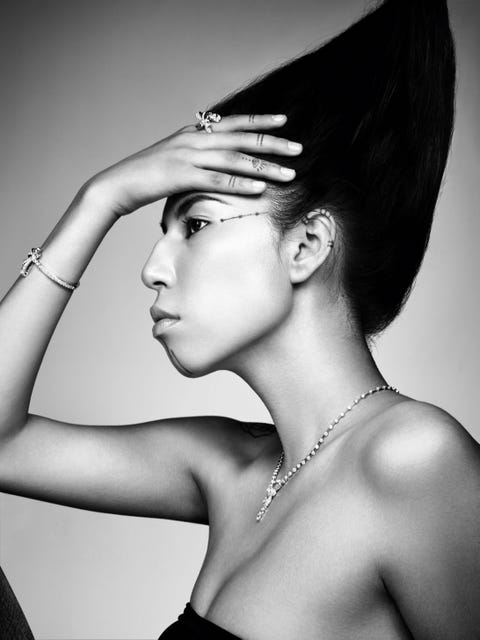
- BEAUTY TIP: Glowing skin begins with daily use of a hydrating serum, such as Guerlain Abeille Royale Advanced Youth Watery Oil ($135).
“There are always Indigenous people showing up, doing the work, and I don’t think we get enough recognition... Our voices are constantly being pushed away because people don’t take us seriously.”
“It all started when I was really young,” she adds. In seventh grade, she convinced her school to change Columbus Day to Indigenous Peoples’ Day by showing up to a meeting the school board was trying to keep under wraps and speaking out forcefully enough to change minds and get an elder from her community on board. Chasinghorse and other Native kids celebrated by coming to school on Indigenous Peoples’ Day in their regalia and moccasins. “I’ve never been that proud of being Native in my life,” she recalls. “I was so proud to be who I was.”
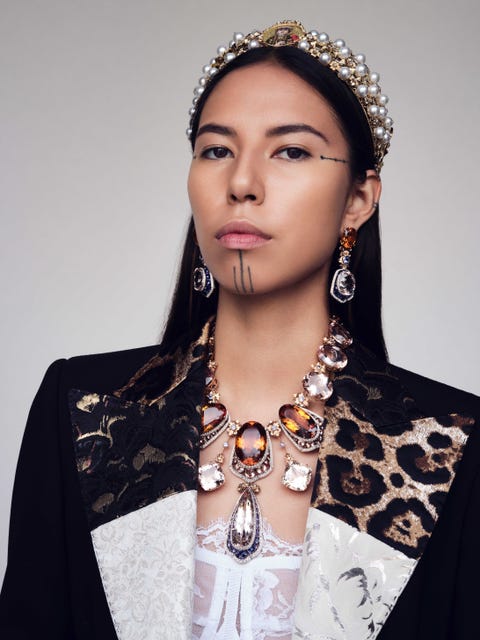
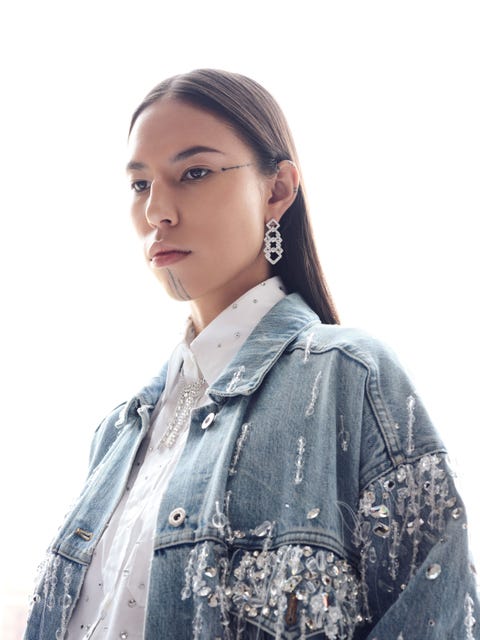
Chasinghorse knows the importance of a single voice at the right time and place. Some protectors and warriors are called to do different work, depending on their skill set, and it seems Chasinghorse is meant for fame and the platform that comes with it. Her looks are more than striking; they’re proudly Indigenous, and the fashion world seems ready for us, finally. While Natives and Native imagery have long been fetishized in fashion, this feels different. Here is a young woman with a voice, and the intelligence and agency to celebrate her culture in an authentic way, being celebrated in campaigns and on the runway.

She speaks with a wisdom that comes from a direct connection to her land and her people. She tells me about her ties, about her people’s potlatch ceremonies that help to guide loved ones into the spirit world (a traditional feast or gathering once banned by both the Canadian and U.S. governments), and all the ways her mother and aunties have helped her stay true to Indigenous beliefs and traditions. And she talks about her place in the climate movement. While young activists like Greta Thunberg have brought attention to the climate crisis, “There are always Indigenous people showing up, doing the work, and I don’t think we get enough recognition... Our voices are constantly being pushed away because people don’t take us seriously,” she says. “We’ve always been a stereotype, a mascot. We’ve always been not seen as real humans. Being a part of that change and encouraging other Indigenous youth to step up and use our voices, but also to be proud of who we are, is what motivates me. It keeps me wanting to keep doing what I’m doing.”
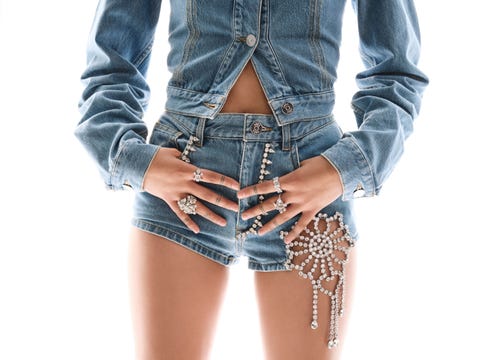
When she talks about her modeling work or representing Indigenous people at the Met Gala, she’s happy, but when she talks about the land and her people, she beams. She tells me about her first caribou kill, another rite of passage she’s reclaimed. Her uncle had just passed away, and she and her family were driving his body home to rest. “It was such a beautiful night by the time we got to the summit, which is way above the tree line. It’s very beautiful; there’s just mountains. We got to the top and we had like 30 miles left to go to our village. Out of nowhere we were surrounded by caribou, and our uncle was in the back of our truck in his casket. Where we were, where the caribou came to us, was his family’s land back then, so it was such a ‘wow’ moment. We were able to get three caribou to bring back to the village, and I got my first caribou that night.”
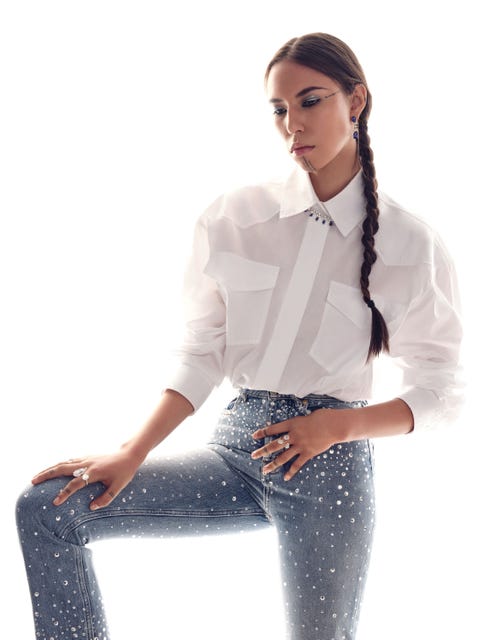
- BEAUTY TIP: Dip a dampened brush into Ah-Shi Beauty’s Eye Shimmer in Dusk ($28) to intensify its shine, then apply.
That might seem like just a hunting story to a non-Native, but to an NDN like me it’s a sign; it’s a sacred thing for many—the meat goes to the people and feeds a community, and providing that meat is an honor Chasinghorse could finally fulfill. Without the caribou, her people don’t have tradition, or a way of life they still depend on. Chasinghorse will tell you about the land and how, on her hunts since, she’s noticed insects not native to Alaska. She’s smart enough to tell you how the world is changing, how people she knows are being displaced by ice melt and the thawing of the permafrost in her home state, how communities are being ravaged by climate change. She can speak to how life is changing faster than we can comprehend, and she’s pragmatic enough to tell us what we can do to help. It’s time to listen to her, and the Indigenous people who have been telling the truth for thousands of years about this land and what we have left to protect.
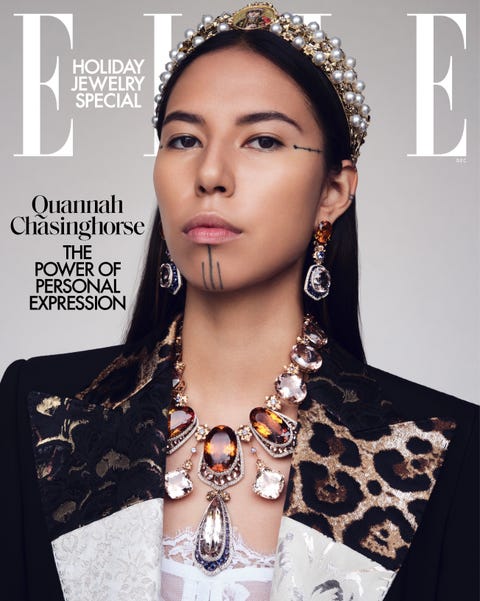
Hair by Tomo Jidai for Oribe; makeup by Francelle Daly for Love*Craft*Beauty; manicure by Megumi Yamamoto for Chanel Le Vernis; model: Quannah Chasinghorse at IMG; produced by Jessica Hafford at Random Productions
This article appears in the December/January 2021 issue of ELLE.
